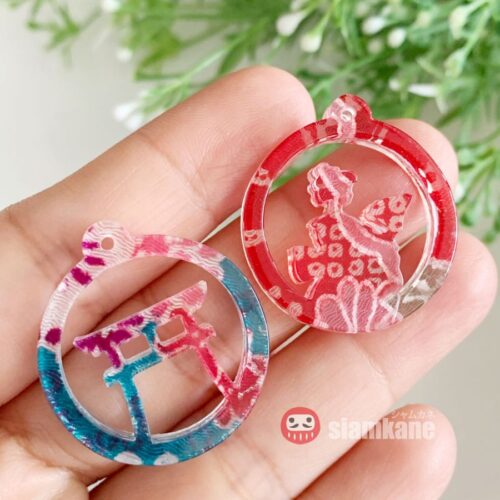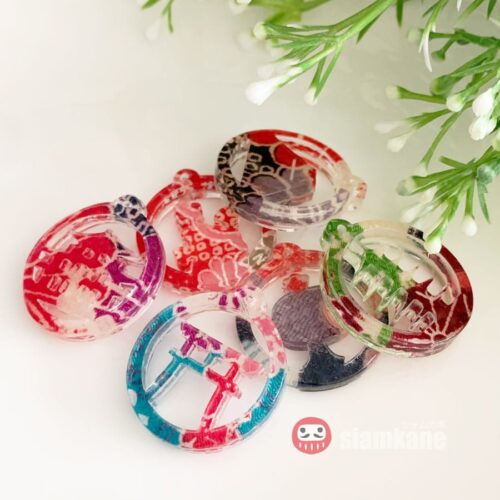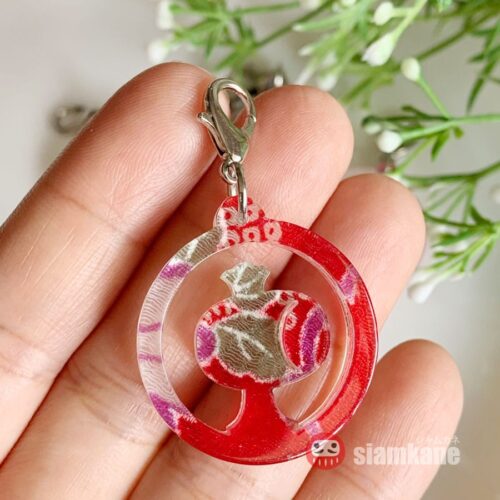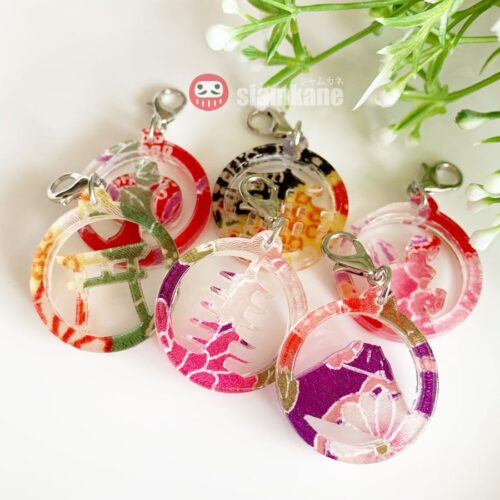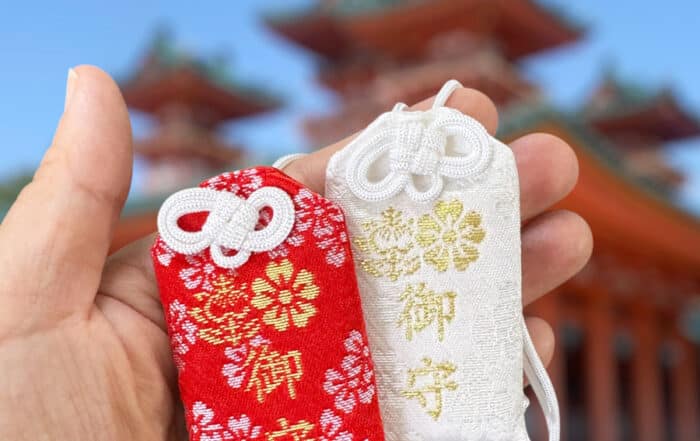Chirimen Made
“Chirimen” refers to a traditional Japanese weaving technique and a crepe-like fabric produced using this method. The term can also be used to describe products made from chirimen fabric. Here are some key aspects of chirimen:
- Chirimen Fabric: Chirimen fabric is known for its distinctive texture and is created using a special weaving technique that involves alternating the weft threads. This results in a crepe-like texture characterized by a surface with subtle wrinkles or crinkles. The fabric is often made from silk but can also be crafted from other materials.
- Traditional Use: Chirimen fabric has been traditionally used to make various traditional Japanese garments and accessories, including kimonos. Its unique texture adds visual interest and depth to clothing.
- Chirimen Craft Products: The chirimen weaving technique is also used to create a variety of craft products. Small items such as purses, pouches, hair accessories, and keychains are often made from chirimen fabric. These products often feature vibrant colors and intricate patterns.
- Doll Making: Chirimen is commonly used in the creation of traditional Japanese dolls. The fabric’s texture enhances the visual appeal of these dolls, which are often crafted with great attention to detail and cultural significance.
- Modern Applications: While chirimen has deep roots in tradition, contemporary designers and crafters also incorporate chirimen fabric into modern fashion and accessories. Its unique texture and ability to hold vibrant colors make it a sought-after material.
- Patterns and Designs: Chirimen fabric can come in various patterns and designs, including florals, geometric shapes, and traditional Japanese motifs. The combination of the distinctive chirimen texture and intricate designs adds to its aesthetic appeal.
- Chirimen Craftwork: Crafters often use chirimen fabric for a variety of DIY projects, such as making accessories, home décor items, and gifts. The fabric’s versatility makes it suitable for a range of creative endeavors.
Chirimen, with its historical significance and distinctive features, continues to be appreciated both in traditional Japanese attire and contemporary craft and fashion. The fabric’s unique texture and vibrant designs contribute to its enduring popularity in various forms of Japanese art and craft.
QUICK MENU
RECENT POSTS
Sayuri Koi2024-11-24T22:48:34+07:00
Discovering Gotokuji omamori : Uncovering the Mysteries and Magic of the Lucky Cat Temple
Sayuri Koi2024-11-24T22:48:34+07:00Uncategorized|
TAGS
5 yen
amulet
Cat Luck
charm
Charms for Travelers
chusonji
fushimi
good fortune cat
hiraizumi
inari
japanese bracelet
japanese good luck bracelet
Japanese love amulet
japanese lucky gods
Japanese Omamori
kami
kitsune
Kiyomizu
Kyoto
love
love charm from Kyoto
love omamori
Luck Bracelet
luck coin
lucky
Lucky bracelet
Lucky CAT
Lucky charm
lucky coin
Maneki Neko
nonomiya
omamori
Omamori Charms
omamori for love
shrine
talisman
Japanese-Omamori® is an Omamori Online store established since 2001. sells Omamori and other products from Japan locate in Thailand. We were inspired by ecotourism and admired the uniqueness of Japan.
Japanese-Omamori®は2001年に設立されたお守りオンラインストアです。日本からタイにあるお守りやその他の商品を販売しています。私たちはエコツーリズムに触発され、日本の独自性に感心しました。
© Copyright 2012 - 2025
Japanese-Omamori.com
Best Omamori Online Shop
All Rights Reserved

